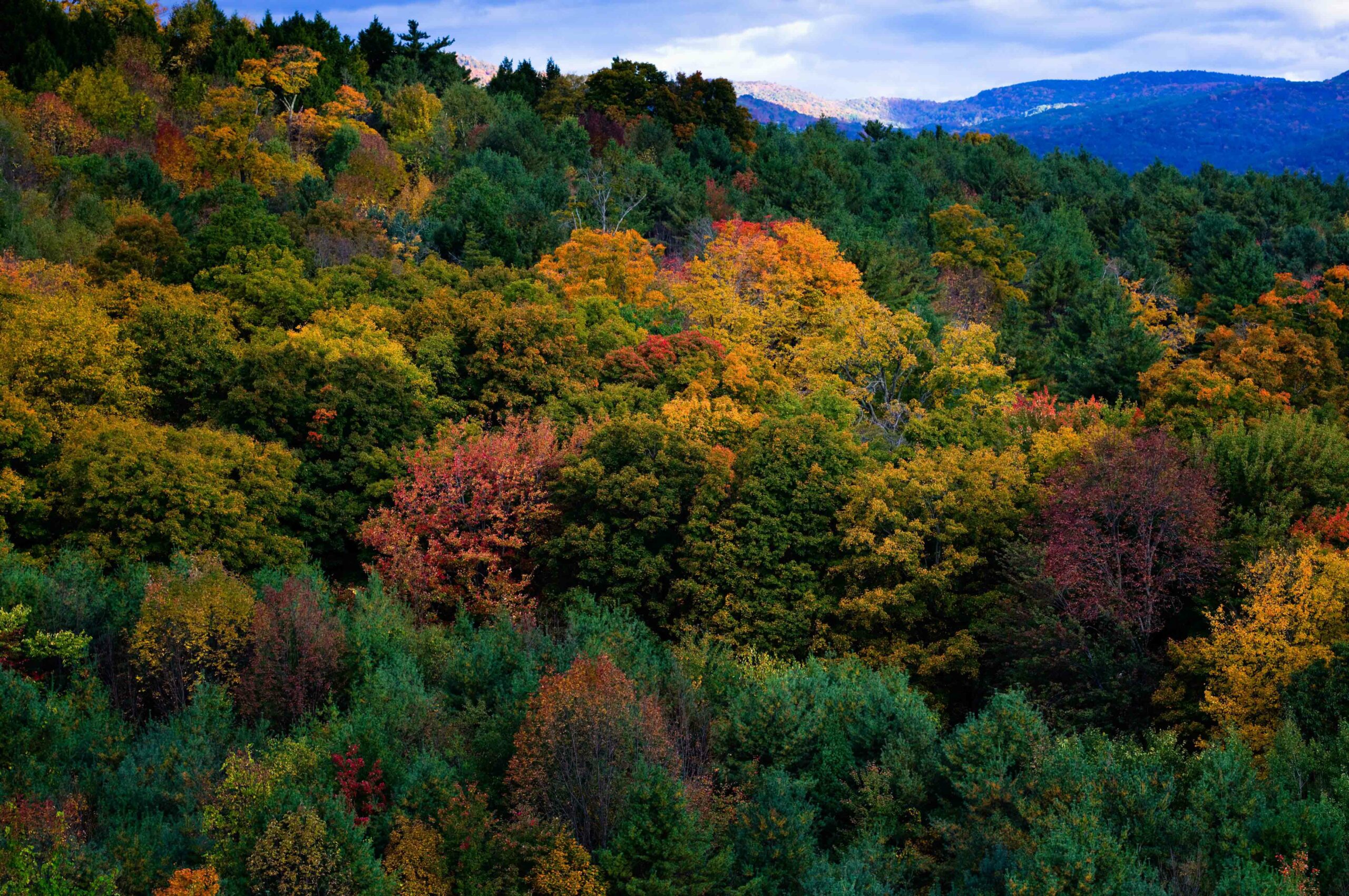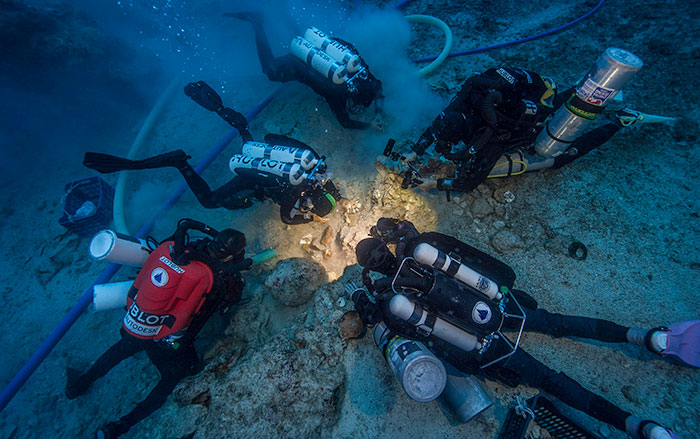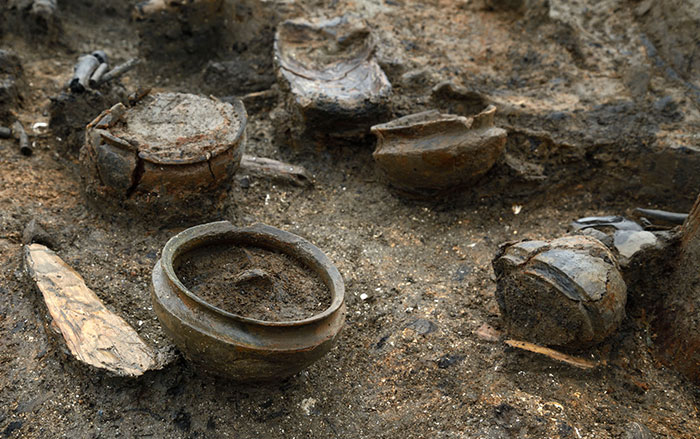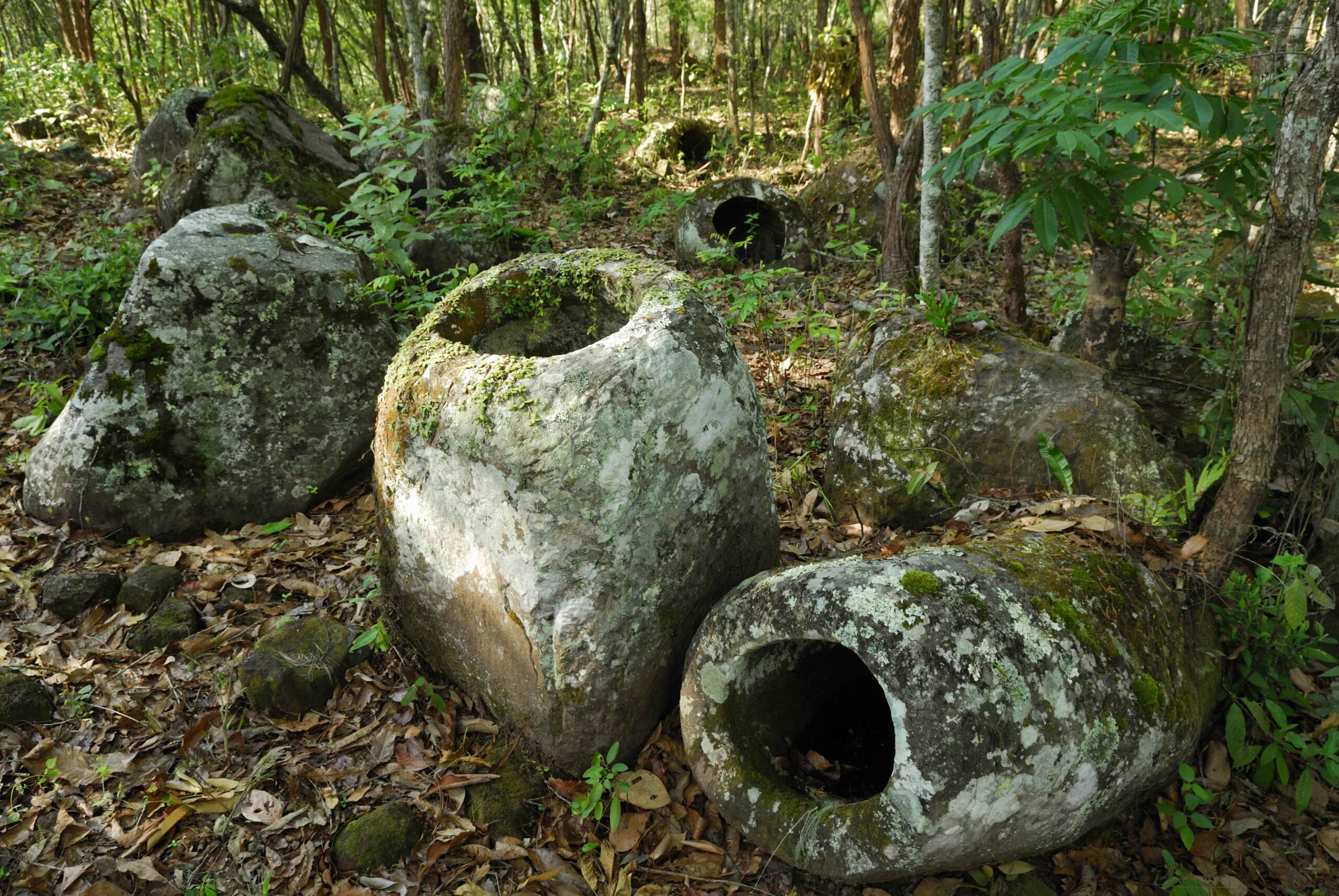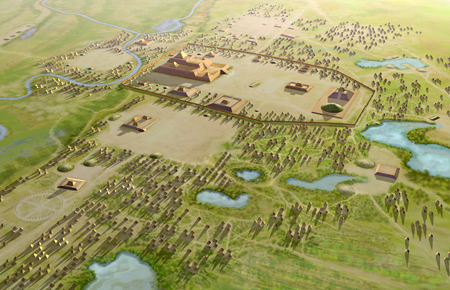
INDIANAPOLIS, INDIANA—National Public Radio reports that climatologist Broxton Bird of Indiana University-Purdue University Indianapolis and colleagues analyzed layers of calcite crystals interspersed with layers of mud on the bottom of Indiana’s Martin Lake in order to learn about historic rainfall levels at Cahokia. The study suggests that beginning in the 900s, the Central Mississippi Valley received more rain than usual. And carbon isotopes found in skeletons at Mississippian cities indicate that people ate a lot of corn. “That comes at right around 950, and that’s around the time the population at Cahokia explodes,” Bird said. Then around A.D. 1200, at a time of increased worldwide volcanic activity, the weather pattern in North America shifted. “We switch to profound drought at A.D. 1350,” Bird explained. According to the climate record in the Martin Lake sediments, the drought lasted for 500 years. Archaeological evidence suggests that palisades were built at Cahokia after A.D. 1250, villages were burned, and skeletal remains show signs of decapitations and other injuries. Bird and his colleagues think climate change and food scarcity prompted the residents to migrate to the south and east, where conditions were less extreme. For more, go to “Breaking Cahokia’s Glass Ceiling.”


